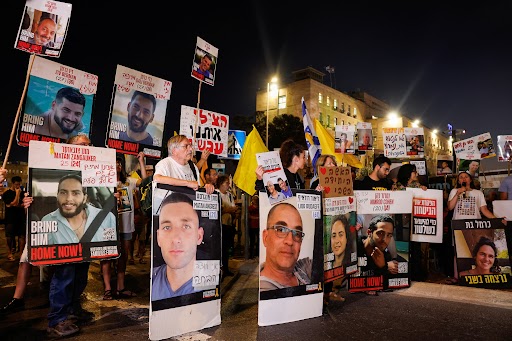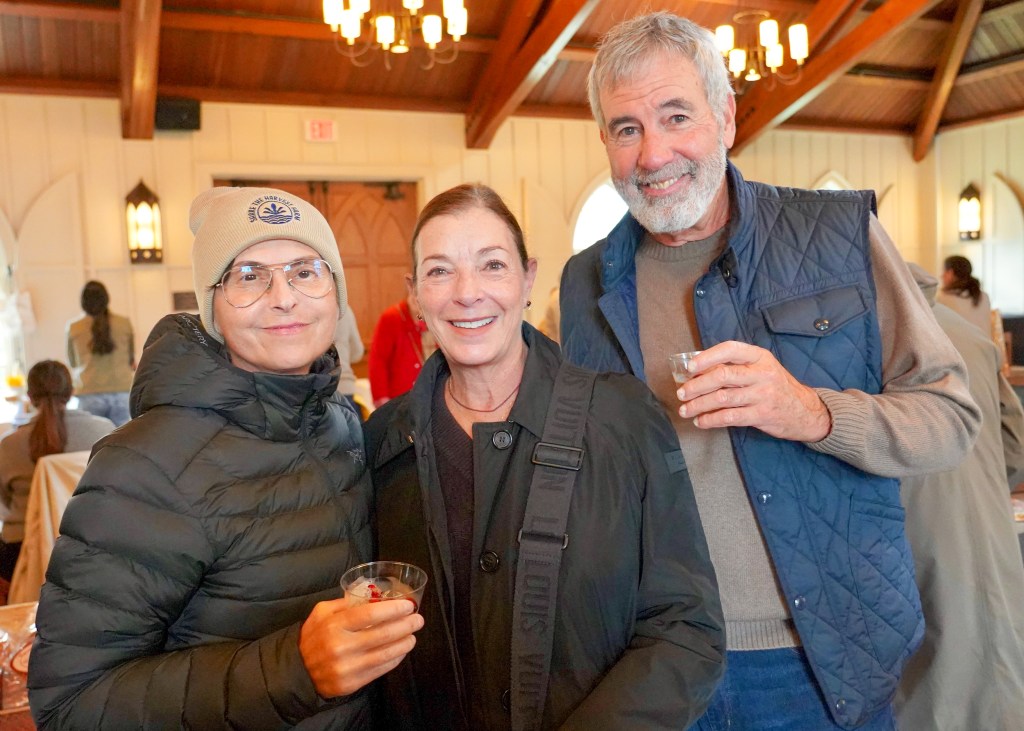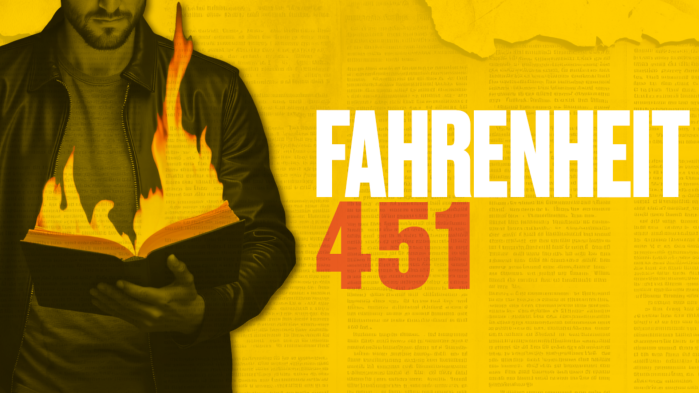Freed Israeli Hostage Shares His Amazing Story in East Hampton

His name is Omer Shem Tov. And he is a free man.
On a pleasant mid-July Sunday in East Hampton, Omer Shem Tov spoke to a rapt standing-room-only crowd under a tent at Chabad of the Hamptons.
The young Israeli was abducted by Hamas during the October 7 terrorist attacks and held hostage for 505 days. He was finally released from captivity as part of a cease-fire deal five months ago.
Since then, he has been traveling the world, advocating for the release of the remaining hostages and speaking about his experiences as a prisoner in the tunnels, bombed-out streets and abandoned buildings of Gaza.
When he tells his story, he almost always starts – and finishes – the same way.
“My name is Omer Shem Tov,” he says with a mixture of joy and defiance. “And I am a free man.”
As it did last year when it hosted a presentation by Eden Gafner, a survivor of the October 7 attacks, Chabad of the Hamptons continues to provide a crucial forum for Israelis to recount their experiences in the fight against terrorism – firsthand and in their own words.
Thinking people will acknowledge that the stories of Israeli survivors, regardless of how righteous they may be, represent only one side of a conflict that includes innocent victims and egregious acts on both sides. That being said, Shem Tov’s story, like Gafner’s before him, is a complex tale of unspeakable horror, survivor’s guilt, steely determination and resilience.
Or, as Rabbi Leibel Baumgarten, director of Chabad of the Hamptons, said in a prepared statement: “[Omer] carries a story that belongs not just to him, but to the entire Jewish people. Hearing it is a sacred responsibility.”
Shem Tov was attending the Tribe of Nova music festival near the Israel/Gaza border on October 7 when Hamas attacked. He had recently completed his compulsory military service. As many young Israelis do at the end of their time in the military, he was planning a trip to South America with friends.
He was 20 years old.
“We were dancing and having fun,” Shem Tov remembered. “I can say today that it was one of the best parties that I had ever been to.”
That celebration of music, youth and freedom soon transformed into a harrowing ordeal that took him deep into the Hamas tunnel network beneath Gaza — an underground prison of darkness, deprivation, and fear.
Like most Israelis, Shem Tov had grown up experiencing relatively small-scale missile attacks and terrorist activity. So when he first heard there was an attack, he didn’t panic. But once he realized that this was no ordinary incursion, Shem Tov and two friends, the siblings Maya and Itay Regev, found themselves sprinting across a field near the site of the massacre as Hamas militants descended on the southern Israeli desert.
“We heard gunshots everywhere and we were running from one place to another just trying to survive,” he said. “As we were running, we were seeing people drop to the floor as they were shot. We saw bodies everywhere.”
Hours earlier, they had met a fellow concertgoer, Ori Danino, who would later risk his life to return for them after escaping the initial Hamas onslaught. Eventually, Shem Tov was able to connect with Danino, who picked up the terrified friends in his car.
The group hoped they were driving out of danger, but instead they ran into two pickup trucks filled with Hamas attackers. The militants opened fire, wounding Maya and Itay in their legs, Maya more seriously.
“Maya was speaking on the phone with her father and she was screaming, “‘Dad, I’ve been shot. I’ve been shot,” Shem Tov recounted. ‘“I’m so sorry. I love you. I’m going to die. I’m about to die.’”
Maya Regev did not die; nor did her brother, Itay; nor did Shem Tov. They were taken hostage together and lived to tell about their ordeals. Ori Danino was not as fortunate. After being held in captivity for an extended period, Danino was executed in what the Israeli military described as a targeted killing in a Hamas tunnel in Southern Gaza.
“[Danino] was murdered after 11 months in captivity,” Shem Tov reported. “He was my hero and I adore him. If it wasn’t for him, I wouldn’t be here today.”

When he was first dragged into Gaza as a prisoner, Shem Tov reasoned that if he was able to establish some kind of rapport with the Hamas militants who were holding him, it might help him survive.
For example, one of his captors mentioned that he liked the music of popular Israeli pop star Eden Ben Zaken. In one of many surreal scenes during his time as a hostage, Shem Tov found himself singing a Ben Zaken song to his abductor, who actually joined him and sang along.
But those small moments of shared humanity were few and far between. Shem Tov was often abused in captivity.
“The terrorists used to treat me like a pig,” he said. “They used to spit on me every time they would walk by. They would spit inside my food and do horrible things to me.”
During his time in captivity, Shem Tov was shuffled between various holding areas. While being driven through the streets of Gaza shortly after the Hamas attack, he was able to observe what the conflict looked like from the Palestinian side.
“I [saw] women and children, men and the elderly – everyone was so happy to see dead bodies of Jews,” he remembered. “They [were] so happy that their families, their kids, their fathers went out to kill Jews, to rape women, to [take] hostages. And they celebrated like it was their own 4th of July.”
Shem Tov was eventually reunited with Itay and Maya, who had received basic treatment for their wounds. Maya was later moved to a Gaza hospital. She and her brother were released in a November 2023 cease-fire deal.
Shem Tov remained behind — and alone. He was sometimes held at an apartment at street level; other times he was confined deep underground in a Hamas tunnel. He was held for almost two months in a tiny tunnel prison in complete darkness, where he couldn’t see so much as the shadow of his hand in front of him. The holding area was so small that Shem Tov couldn’t stretch his arms out or stand upright without crouching. And he was given just enough food to keep him alive.
“It began with one pita a day with a bit of cheese, maybe,” he remembered. “And as the weeks [went] by, it [got] worse and worse.”
During the last week of his underground captivity, he was given only a single biscuit a day and no fresh water to drink. He reported that he was so thin and weak, he could feel the bones jutting out of his shoulders and ribcage.
Living a waking nightmare on a daily basis, Shem Tov leaned on prayer to help him survive.
“People always ask God for something… but no one ever asks him how he feels,” Shem Tov observed. “So I used to start a conversation with God. I would ask him, ‘how do you feel today? Are you OK?’ And after that, I would say ‘thank you – thank you for the air in my lungs, and maybe it’s only small amounts, but thank you for the food on my plate.’”
When he was finally moved to an apartment above ground, his new makeshift prison felt palatial compared to what he endured in the tunnel. He began eating better and was able to shower for the first time in months.
When Omer Shem Tov was finally released, 39 pounds lighter but reasonably healthy, he had a brief encounter with a young female member of the Israeli military.
She told him that everything was OK and he’d be seeing his parents and siblings very soon.
“Can I please give you a hug?” he asked the young woman. “She gave me this amazing hug,” he remembered. “After 505 days, all I needed was a bit of warmth and love like any other human being.”









